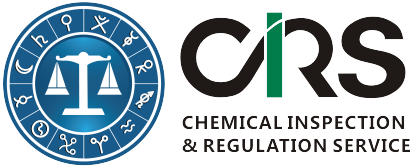
GHS in Vietnam
Updated in Sept 2013
The Chemical Law in Vietnam was passed on November 21, 2007 and entered into force in 2008. With an issuance of Decree 108/2008/ND-CP, “Detailed regulation and guideline of implementation of several articles in Law of chemicals” in October 2008, which provides detailed requirements for hazardous substance classification and SDS compilation under the 2007 Law on Chemicals, the Vietnamese government formally began the process of GHS adoption.
The Ministry of Industry and Trade (MOIT) in Vietnam has issued two regulations, Circular No. 28/2010/TT-BCT and Circular No. 04/2012/TT-BCT (GHS Circular), bringing Vietnam's classification and labeling framework in line with the 3rd revision of GHS(2009).
Transition period
The Circular No. 04/2012/TT-BCT (GHS Circular), effective as of 30 March 2012, provides transitional periods of two and four years for substances and mixtures, respectively.Effective date |
Requirement |
30 March 2014
|
Substance |
30 March 2016 |
Mixtures |
Labeling
Labeling provisions are covered by Article 12 of the GHS Circular and Article 12(48) of Decree No. 89/2006/ND-CP. Comparing with UN GHS, the basic label elements required in Vietnam are as follows.GHS(4th revised) Label elements |
Vietnam GHS Circular Label elements |
|
|
Requirements on size and fonts of labels are annexed to the GHS Circular in Appendix 4:
- Label size: Organizations or individuals manufacturing or importing who are responsible for labeling of chemicals may decide the label size for themselves. The mandatory contents should be highly visible to the naked eye.
- Hazard pictograms: Larger than 2cm × 2cm;
- Warning words: In lower-case bold letters or in upper-case letters with height not less than 2mm
- Hazard statements: Lower or upper-case letters with height not less than 2mm;
- Language on labels: in Vietnamese (Article 10 of GHS Circular). Other language can be present but in smaller font sizes. Certain labeling elements are exempted from the Vietnamese language, which may be provided in English.
- Small Packages: Under Article 17 of the GHS Circular, a supplemental label may be used for small packages when their size does not permit adequate placement of all mandatory elements on the main label. At a minimum, labels affixed to small packages are required to contain protective measures, instructions for use, and instructions on storage/preservation, and a reference to where the user can find all mandatory elements of the label.
SDS
Pursuant to the Law on Chemicals No. 06/2007/QH12 (Article 29) and Decree 108/2008/ND-CP (Articles 16, 17), Article 40 and Appendix 17 of the Circular No. 28/2010/TT-BCT establish the requirements for compilation of the SDS. The Vietnamese SDS inverts part 2 and part 3 comparing with UN GHS.GHS(4th revised) SDS |
Vietnamese 16-Section SDS |
1. Identification |
1. Product Identification |
2. Hazard identification |
2. Ingredients |
3. Composition/information on ingredient |
3. Hazard Identification |
4. First-aid measures |
4. First Aid and Measures |
5. Fire-fighting measures |
5. Fire Fighting Measures |
6. Accidental release measures |
6. Measures for Preventing and Responding to Chemicals Incidents |
7. Handling and storage |
7. Storage Requirements |
8. Exposure controls/personal protection |
8. Effects on Humans and Personal Protection |
9. Physical and chemical properties |
9. Physical Chemical Properties |
10. Stability and reactivity |
10. Stability and Activity |
11. Toxicological information |
11. Toxicology Information |
12. Ecological information |
12. Ecological Information |
13. Disposal consideration |
13. Disposal Requirements |
14. Transport information |
14. Transport Requirements |
15. Regulatory information |
15. Technical Specifications and Legal Regulations to be Observed |
16. Other information |
16. Other Information |
Language on SDS: Manufacturers and importers are required to provide a Vietnamese version of the SDS, in addition to the original language (or English-language) version.
About Us
CIRS a leading provider of comprehensive chemical compliance services for companies doing businesses in/with EU and Asia with a strong focus on chemical compliance.
We have provided one-stop chemical notification and GHS services for many companies doing business in/with Asia (for example, China, Japan, Korea, Taiwan, Malaysia, and Philippine). We help them find out how their chemicals are regulated in those countries or regions and offer free initial consultations about how to comply. If notification is required, we help them submit chemical registrations. We also prepare or translate GHS compliant SDS and label in accordance with their national chemical legislation at affordable prices.
If you have any questions about chemical compliance in the EU and Asia-pacific region, please contact:
- CIRS China
11F Building 1, Dongguan Hi-Tech Park, 288 Qiuyi Road, Binjiang District, Hangzhou 310052, China
Tel: +86-571 8720 6555 | Fax: +86-571 8720 6533
Email: service@cirs-reach.com


